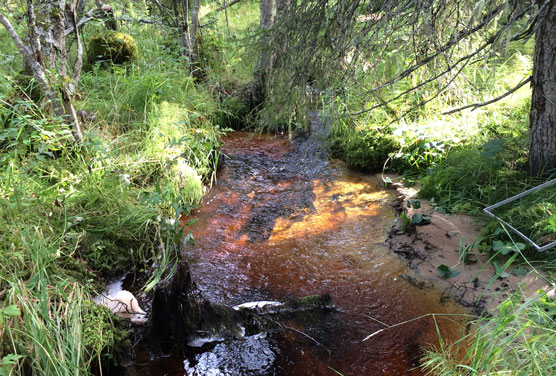
Photo: Jarno Turunen, SYKE
Forestry practices can cause excessive sedimentation in stream ecosystems. A challenge to stream management is therefore to identify the best restoration practices to mitigate the harmful impacts of fine sediments on stream ecosystems.
Finnish Environment Institute and University of Oulu studied the effects of restoration of sediment-impacted headwater streams on the habitat structure, hydrologic retention, biodiversity and ecosystem functions. Restoration by wooden or boulder structures aimed to reduce deposited sediments and increase channel habitat heterogeneity and hydraulic retention.
Restoration improved stream and riparian biodiversity, but had low effects on ecosystem functions. Different restoration measures resulted in differing biodiversity outcomes. Boulder addition was more effective at restoring in-stream habitat structure and aquatic biodiversity, whereas wooden structures improved channel hydrological retentiveness and, consequently, riparian vegetation.
Therefore applying both measures in the restoration of forested headwater streams with naturally stony substrates would likely result to the best biodiversity responses. In-stream restoration that increases hydraulic retention has impacts that extend beyond ecosystem boundaries, reinforcing the need to restore, manage and protect streams and their riparian forests in an integrated effort.
Results of the project were published in Journal of Applied Ecology:
More information
Researcher Jarno Turunen, Finnish Environment Institute,
Tel. +358 295251582, firstname.lastname@ymparisto.fi
Senior Research Scientist Jukka Aroviita, Finnish Environment Institute,
Tel. +358 295251073, firstname.lastname@ymparisto.fi
Professor Timo Muotka, University of Oulu / Finnish Environment Institute,
firstname.lastname@oulu.fi